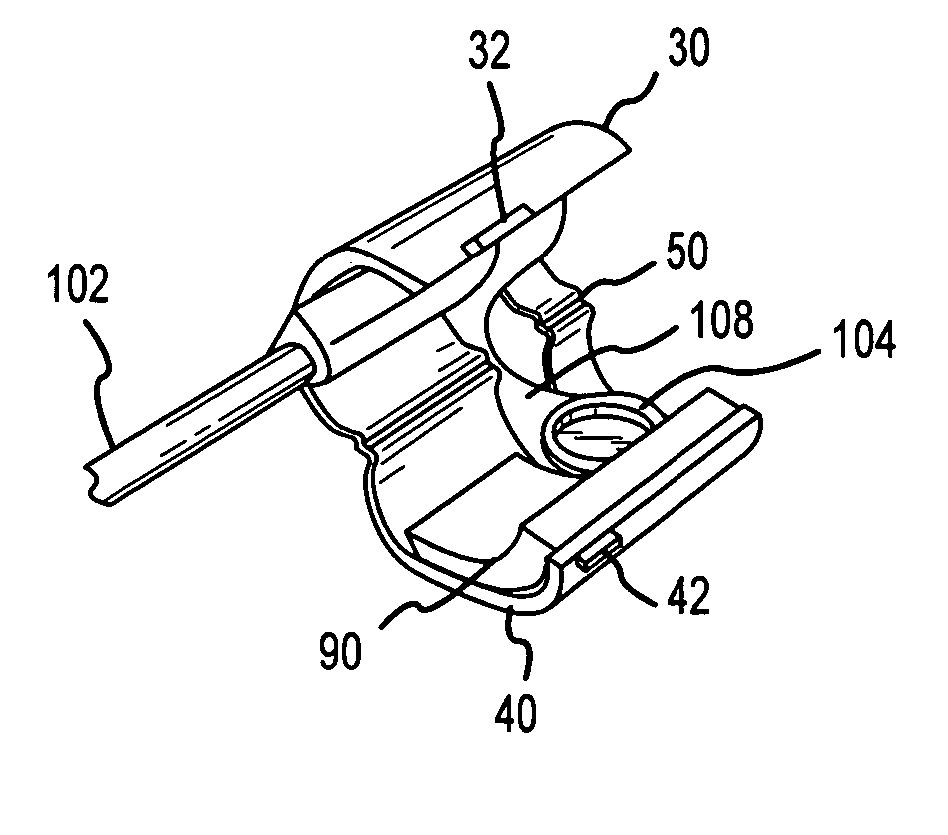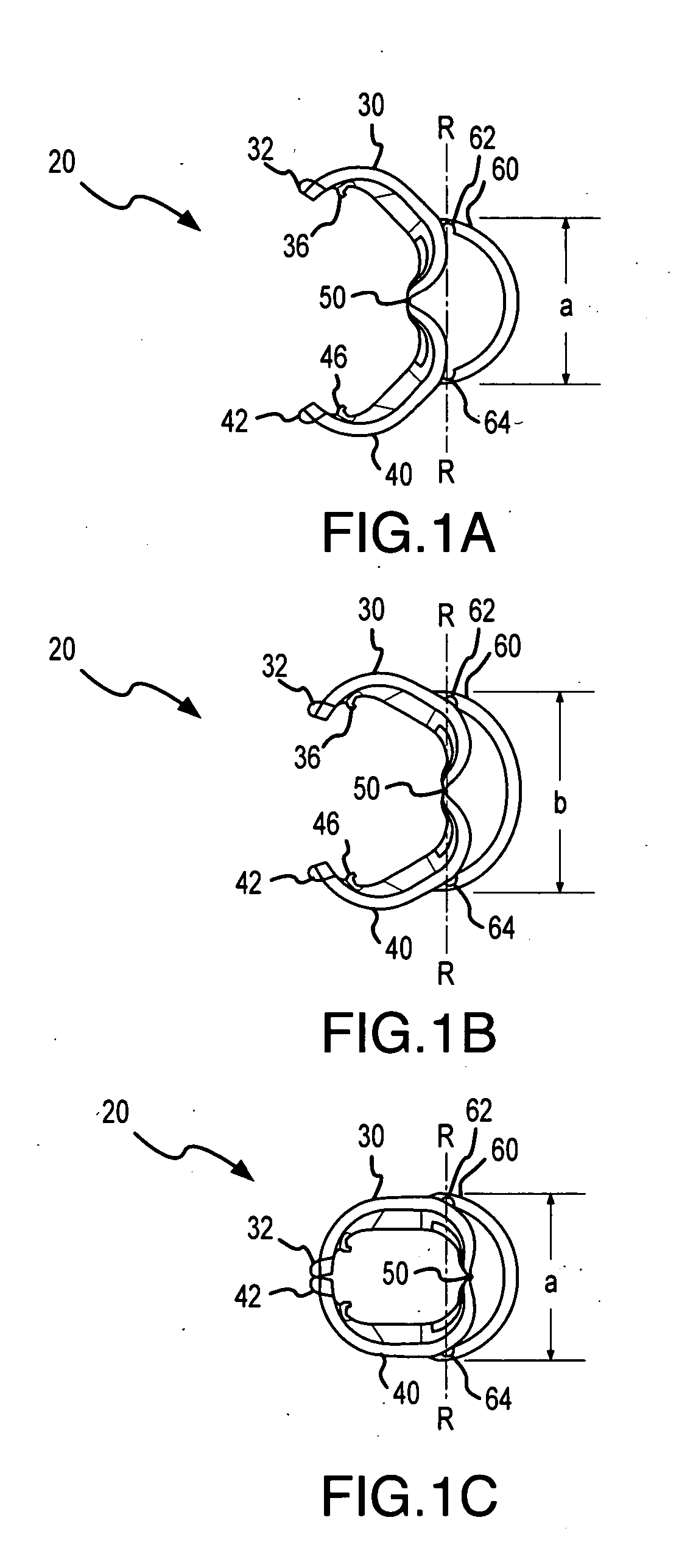Quick-clip sensor holder
a sensor and quick-clip technology, applied in the field of quick-clip sensor holders, can solve the problems of sensor failure, sensor held too tightly to the tissue, interference with physiological parameters, etc., and achieve the effect of avoiding excessive vasoconstriction and reliability of attachment to the patien
- Summary
- Abstract
- Description
- Claims
- Application Information
AI Technical Summary
Benefits of technology
Problems solved by technology
Method used
Image
Examples
Embodiment Construction
[0030] The present invention will now be described in relation to the accompanying illustrations, which at least assist in illustrating its various pertinent features. The present invention, a sensor holder that clips onto a patient appendage (e.g., finger) is described in conjunction with a pulse oximetry sensor. In particular, the sensor holder is adapted to hold a pulse oximetry sensor having emitters and detectors that are separated such that an optical path is created through patient tissue. However, it will be appreciated that the clip-type sensor holder of the present invention may be utilized with differently configured pulse oximetry sensors as well as other non-invasive medical sensors. In the following description, the invention is set forth in context of an integrally formed sensor holder that utilizes a living hinge member and an “over snap” spring design. This over-snap spring design utilizes a substantially non-biased spring to hold opposing appendage engaging members...
PUM
 Login to View More
Login to View More Abstract
Description
Claims
Application Information
 Login to View More
Login to View More - R&D
- Intellectual Property
- Life Sciences
- Materials
- Tech Scout
- Unparalleled Data Quality
- Higher Quality Content
- 60% Fewer Hallucinations
Browse by: Latest US Patents, China's latest patents, Technical Efficacy Thesaurus, Application Domain, Technology Topic, Popular Technical Reports.
© 2025 PatSnap. All rights reserved.Legal|Privacy policy|Modern Slavery Act Transparency Statement|Sitemap|About US| Contact US: help@patsnap.com



